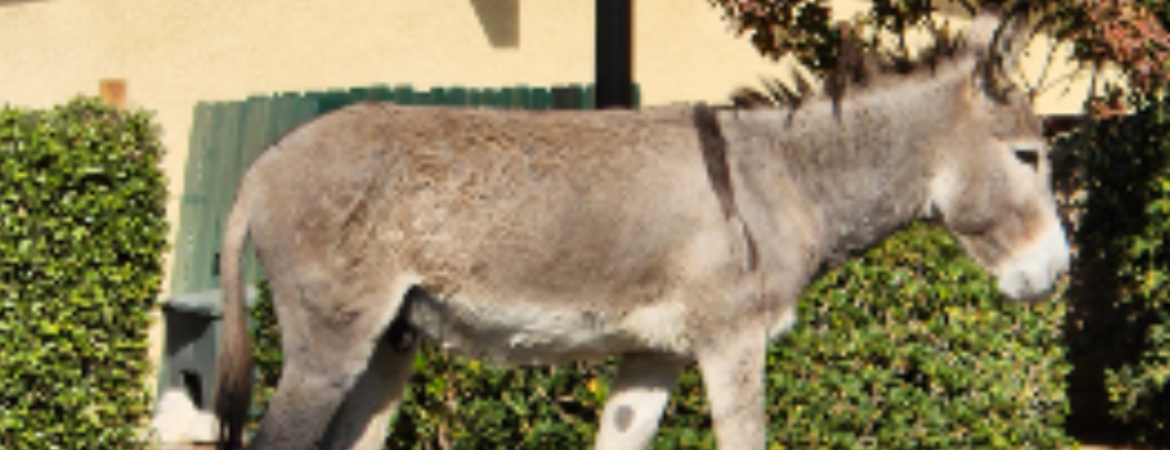
The Box Springs Mountains and surrounding areas are home to an animal that can cause visitors to do a double-take. This animal is so bold that it will often stick its head right through a car window in the hopes of a human-provided treat. The animal we are discussing is of course the wild donkeys or burros that roam various areas near the UCR campus. Sightings and interactions with the donkeys have increased over the years but the oddness of seeing donkeys walking around town never seems to dissipate.
Habitat/Diet
There are a number of herds that roam the areas between Riverside, Moreno Valley and San Timoteo Badlands. The wild donkeys or burros are not native to our area or even this continent but their sightings have become so numerous they seem as innocent and everyday as a House Finch. Donkeys are derived from the African wild ass, Equus africanus and can be considered a subspecies or separate species, Equus asinus. Domesticated about 7,000 years ago in the sparse hilly habitats of North Africa and the Arabian Peninsula, their strength and resiliency appealed to Europeans who brought them to North America. Their arrival specifically to California is linked to the Gold Rush and expeditions from Mexico. No one seems to agree on how they arrived in our area, but there are several stories floating around. One of the most common stories is of miners bringing them to the area then abandoning them when mining operations failed. Another story is of a gentleman bringing donkeys back from Death Valley in the 1950’s. Regardless of how they arrived, their ruggedness and ability to thrive on a diet of grasses and forbs has allowed them to survive and grow in number. Unfortunately, due to ongoing drought conditions and urban expansion, the herds are having an increasingly difficult time finding stable food and water resources.
Breeding
Little is known about the specific breeding patterns of our local populations, so I will present a description based on the breeding activity of the African wild ass. Wild ass live in various sized herds but a typical herd can comprise of a male and approximately ten females. Males can also be solitary. Both males and females are sexually mature by around two years of age. Females are ready to mate, or come into estrus, March through September. Males will vocalize to tell females they are ready to mate while females give physical signs, such as raising their tails, kicking and spreading their hind legs. Once a mate is chosen, the male will chase the female. The female will then stop abruptly in front of the male and allow him to mount her. Females are pregnant for about 370 days and typically give birth to one baby (foal). Young will remain with their mother for 12-14 months. Once the foal is weaned, the female will be ready to breed again.
Identification
Identification is simple for our local herds. While there are many species all over the world, our local lot look like your typical barnyard donkey. Both males (jack or jackass) and females (jenny) have short coarse hair, usually gray in color with a cross like pattern over the shoulder blades and down the back. Their heads are adorned with long erect ears and a mane that is short and darker in color. Their tails are cow like in appearance. Full grown adults can weight 350-500 lbs.
Threats
These feral donkeys are not a listed species but it is illegal in the state of CA to kill, wound, capture or have in possession any wild donkey. Locally, our wild donkeys face threats from illegal capture, disease, urban development and drought. Several animals such as mountain lion and coyote are known to predate this species. A threat that has increased over the years is vehicle collisions. These donkeys have lost their natural fear of humans and cars. They have come to see humans and cars as a source of food. This is the result of people feeding them from their car windows. Urbanization has also pushed them from the hills into suburbia and even onto preserve lands. Herds can cause severe damage to many ecosystems. While we have not seen much of this with these local herds, it is a well-documented problem in other parts of CA. Several local groups advocate on behalf of the donkeys or offer support, such as Donkey Land, which offers sanctuary for injured feral donkeys.